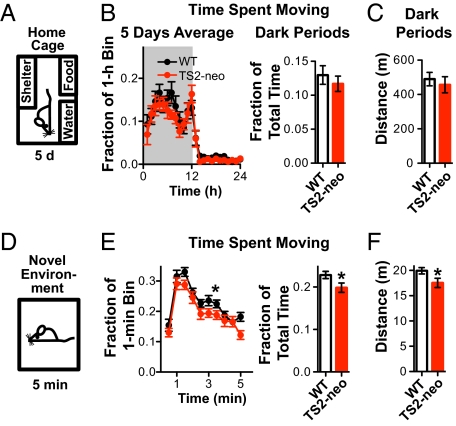Fig. 1.
TS2-neo mice showed normal diurnal rhythm and locomotor activity but decreased locomotion in a novel environment. (A) Basic activity monitored over 5 d in a home-cage with shelter and water/food. n (each genotype) = 12. (B) Time spent moving: average of five 24-h dark/light cycles (gray/white background, respectively) (Left) and pooled data for five dark periods (Right) reveal no differences between genotypes. (C) Distance moved: TS2-neo mice traveled the same average distance as WT littermates during five dark cycles. (D) Monitoring of ambulatory activity over 5 min in activity chamber. n (each genotype) = 31. (E) Time spent moving was slightly but significantly smaller in TS2-neo mice (P = 0.03 for genotype effect, ANOVA) (Left); likewise for cumulative time spent moving (P = 0.03, Student's t test) (Right). (F) Distance moved: TS2-neo mice traveled a slightly but significantly smaller distance (P = 0.04, Student's t test).

